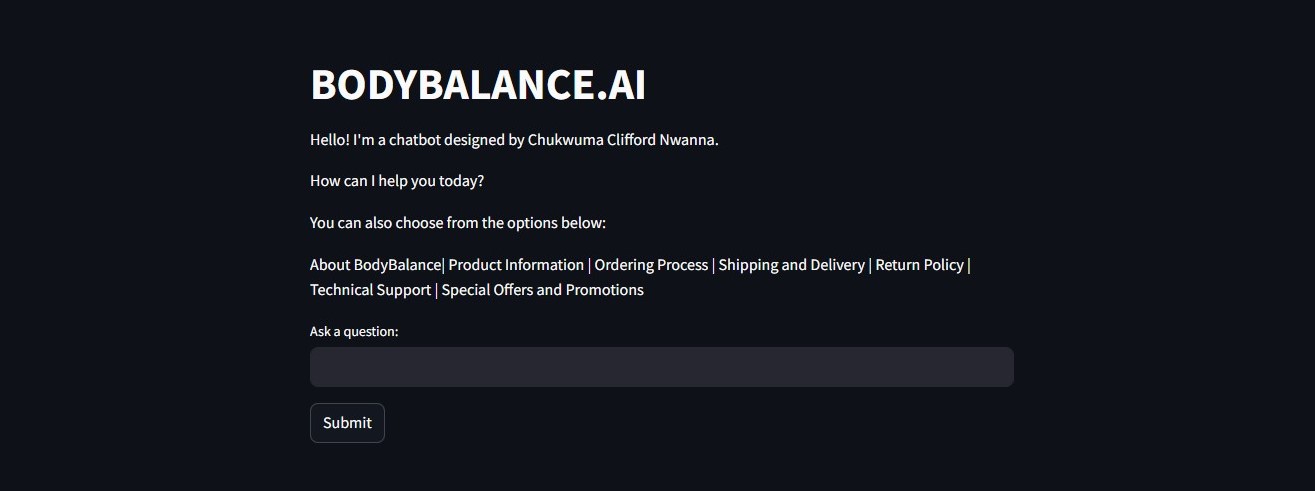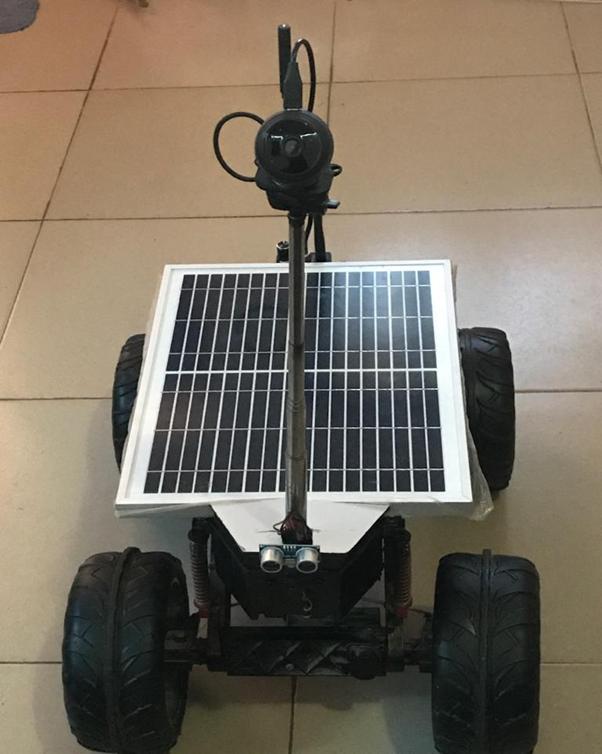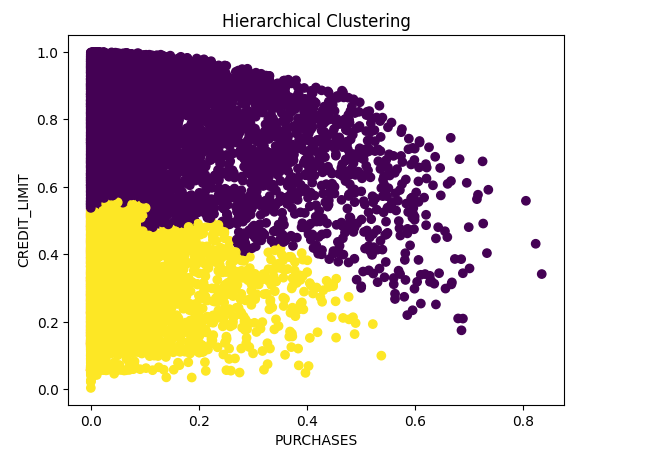BODYBALANCE.AI is an advanced AI-driven chatbot developed to revolutionize customer interactions for the BodyBalance brand. Designed to provide seamless support, it effectively answers frequently asked questions, recommends tailored pain relief products, and assists customers in placing orders. This innovative solution not only enhances customer engagement through real-time responses but also optimizes the customer support process, ensuring higher satisfaction and increased sales opportunities.
Hosted on Streamlit, BODYBALANCE.AI is accessible, user-friendly, and easily integrated into business operations. The chatbot leverages natural language processing (NLP) and machine learning algorithms to deliver accurate, context-aware recommendations, demonstrating technical proficiency in AI technologies. This positions BODYBALANCE.AI as a valuable asset for modern e-commerce and healthcare-focused businesses. Its ideation and implementation highlights my expertise in AI deployment, customer relationship management, and scalable business solutions.
BODYBALANCE.AI


This project involved the design and implementation of a hybrid-powered surveillance system equipped with cellphone detection and autonomous navigation. The system was tailored to curb examination malpractice, leveraging IoT technology, RF detection, and sustainable energy solutions. Key contributions included team leadership, technical design, and prototype development. The solution integrated hardware components such as Arduino Uno, HC-SR04 ultrasonic sensors, and RF detection unit, powered by solar energy for sustainability. Programming was done using C++ in Arduino IDE, enabling seamless communication between components and precise navigation. The system’s real-world impact includes reducing reliance on human invigilation, ensuring unbiased monitoring, and making it suitable for deployment in off-grid locations.

The Credit Card Customer Segmentation project analyzes the spending behaviors of approximately 9,000 active credit card users over six months using unsupervised learning techniques like K-Means and Principal Component Analysis(PCA). My core objective was to identifY distinct customer segments to inform targeted marketing strategies and personalized services.
Key highlights include data preprocessing (handling missing values, outliers, and feature engineering), dimensionality reduction using PCA, and optimal clustering via methods like the Elbow Method and Silhouette Score. My analysis drives actionable recommendations to improve customer engagement, optimize resources, and manage credit risk effectively.
The project demonstrates my expertise in Python, machine learning libraries (Scikit-learn), data visualization (Seaborn, Matplotlib), and strategic problem-solving to enhance financial decision-making. By identifying unique customer behaviors, businesses can optimize resource allocation, develop tailored products, and make data-driven decisions to enhance profitability and strengthen customer relationships.

With this project, I explored how machine learning can enhance malware detection and prediction. The insights I gained from both supervised and unsupervised techniques, including classification and clustering algorithms, can be used to develop more robust and accurate cybersecurity solutions. The project utilized tools such as Python, Scikit-learn, and TensorFlow for model development and evaluation, along with data preprocessing libraries like Pandas and NumPy. Visualization libraries like Matplotlib were used to analyze feature importance and model performance, emphasizing the practical application of machine learning in strengthening cybersecurity defenses.

This project demonstrates how to interact with NASA's public APIs to fetch and process data. I honed into my skills in making API requests, handling JSON responses, and managing data processing with Python. The implementation leverages libraries such as requests for API calls, json for parsing responses, and pandas for efficient data manipulation and analysis. Additionally, data visualization tools like matplotlib and seaborn are employed to present insights effectively, showcasing proficiency in API integration and data science workflows. The project also highlights my ability to work with real-world datasets, ensuring data quality and consistency for analysis. By bridging raw API data and actionable insights, my project demonstrates practical problem-solving skills in data engineering and visualization.




